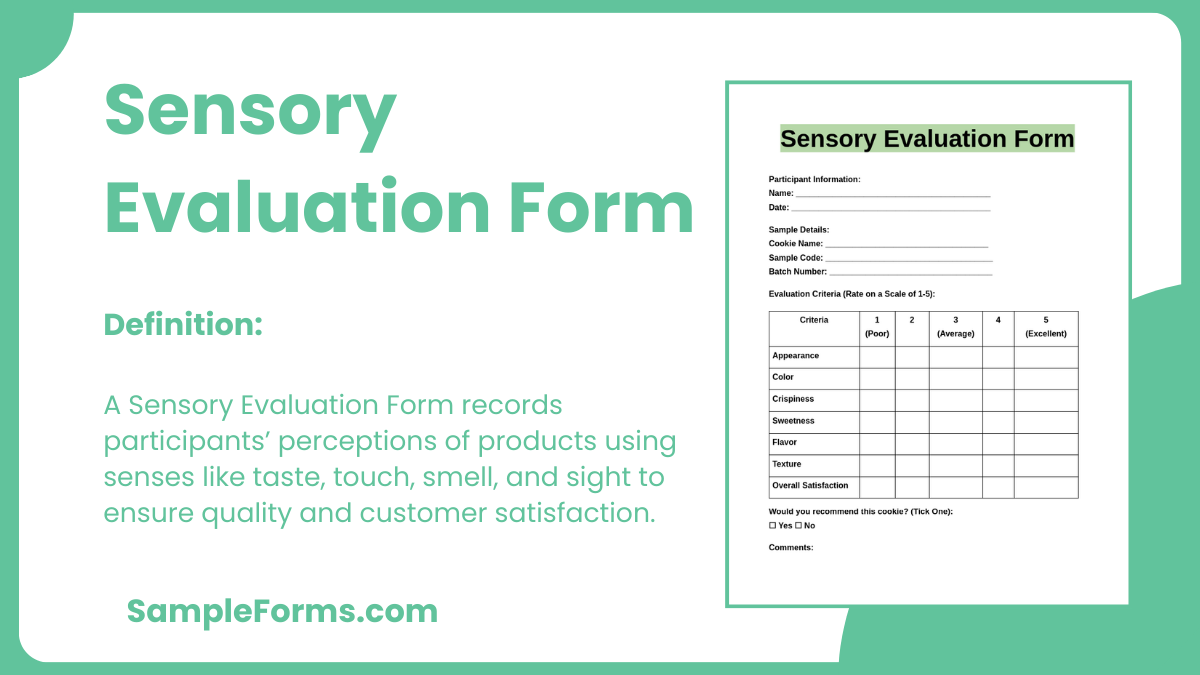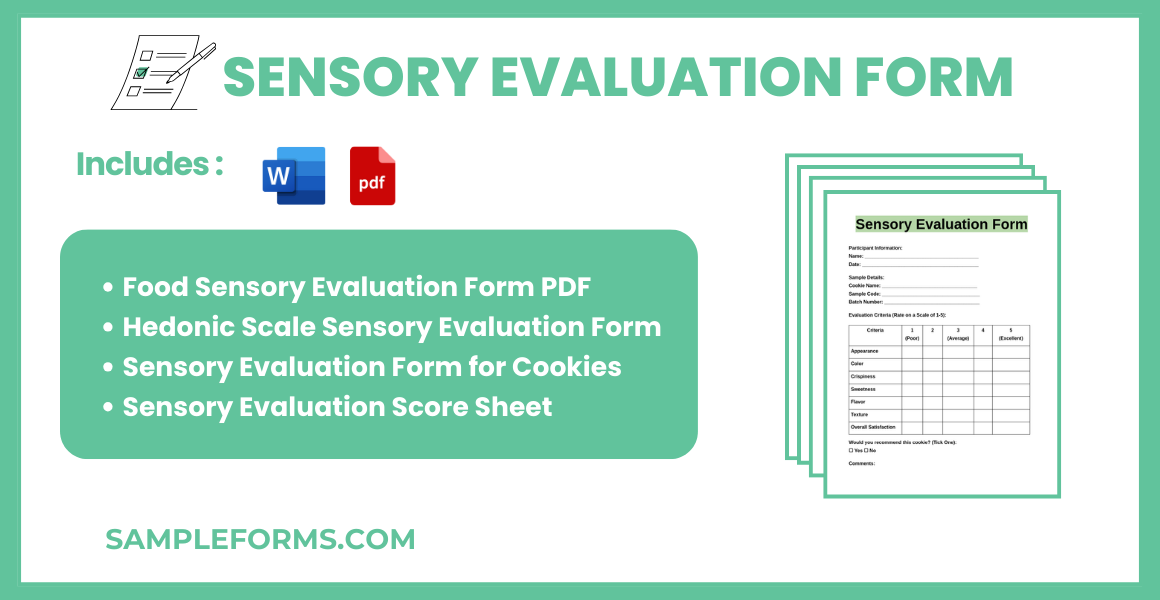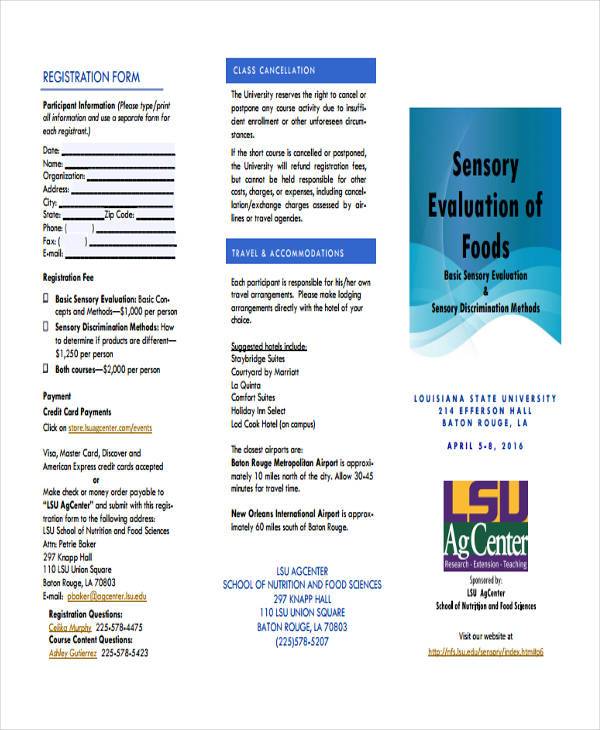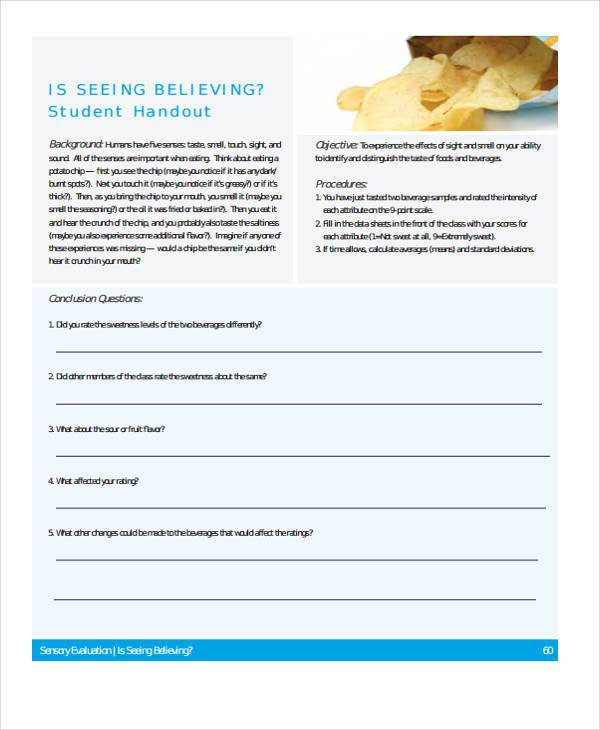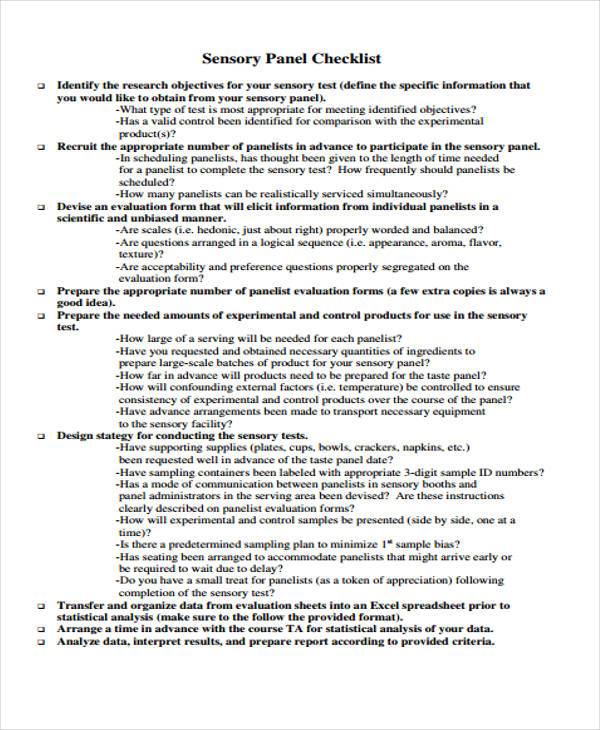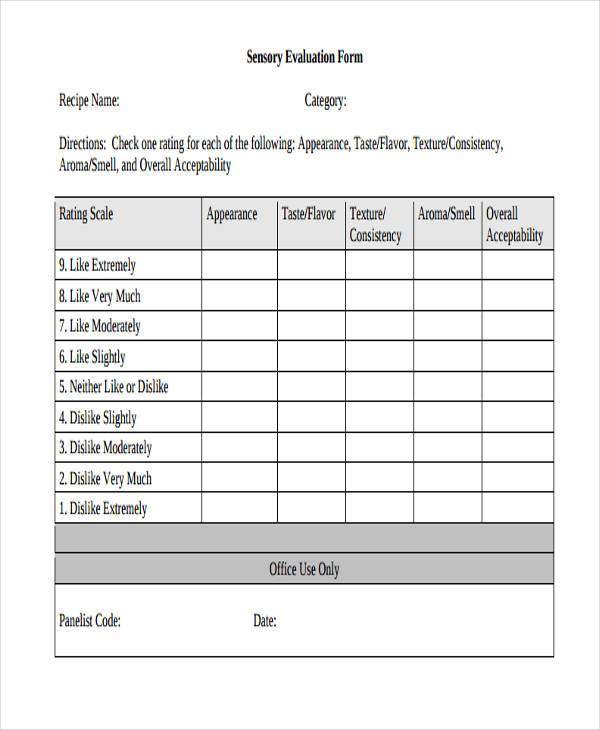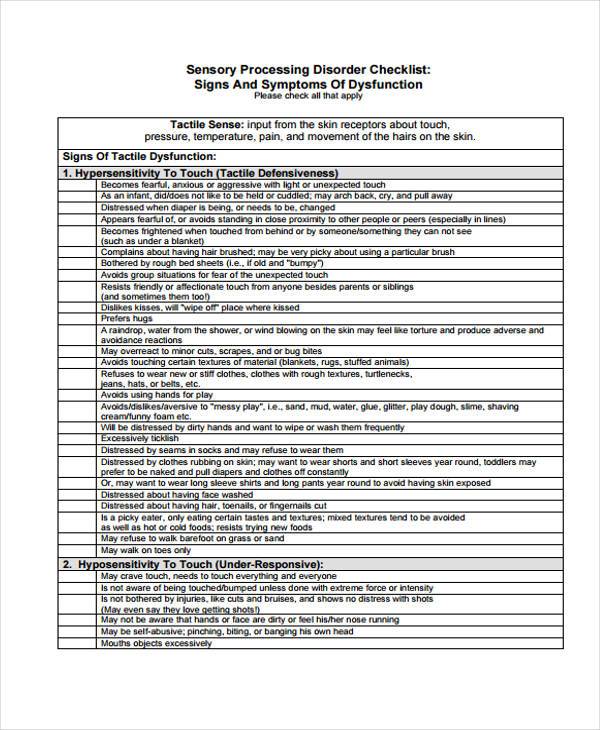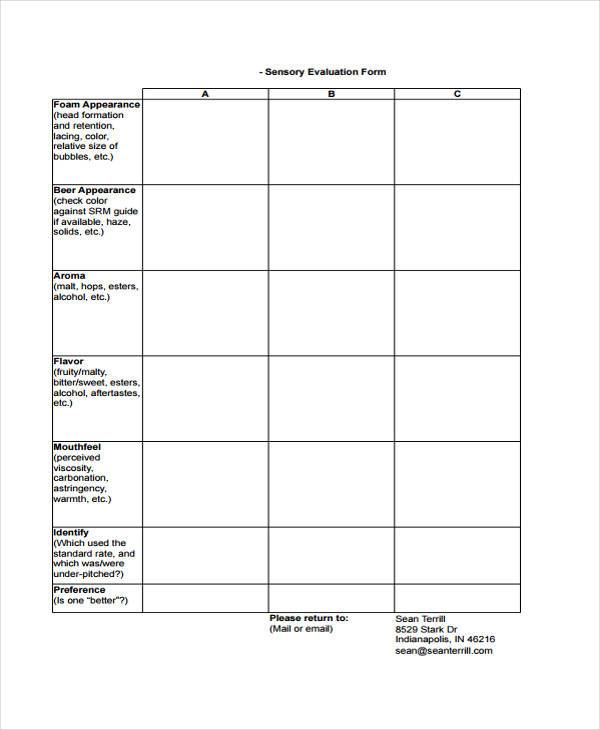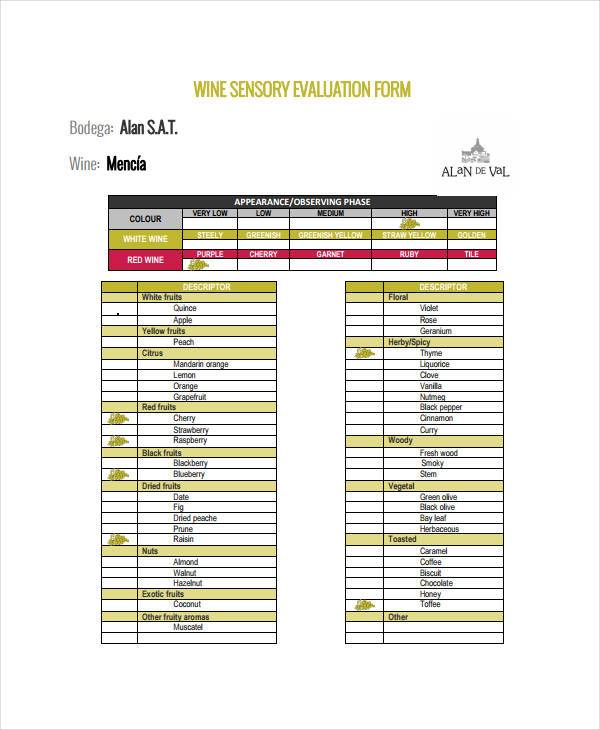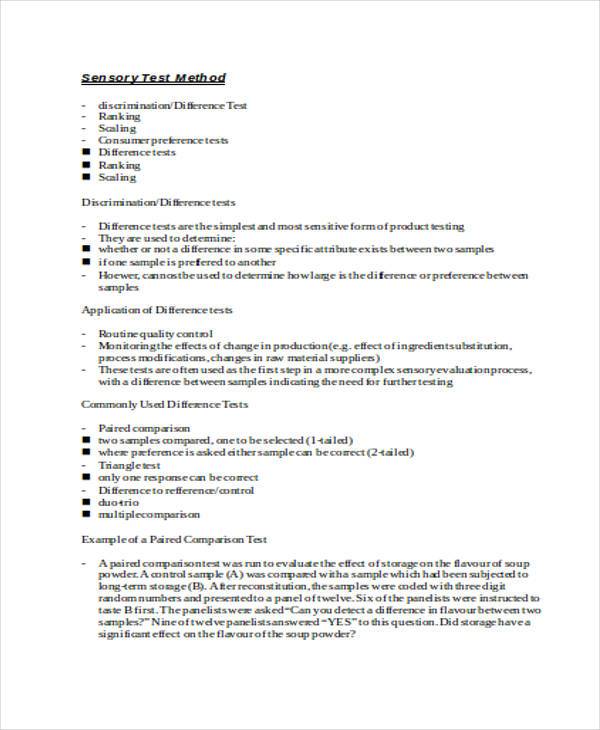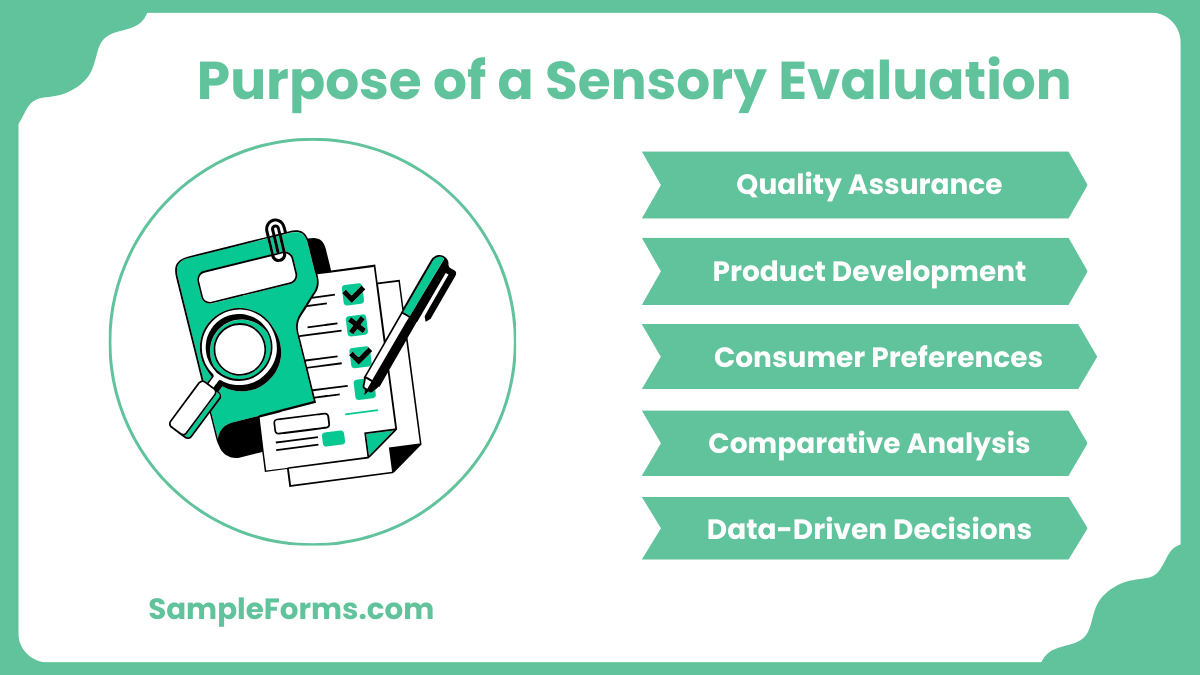A Sensory Evaluation Form is an essential tool for analyzing consumer preferences. By assessing taste, texture, aroma, and appearance, it provides critical insights into product quality. This guide simplifies the process with practical examples and step-by-step instructions. Learn how to create a Food Sensory Evaluation Form, explore its applications, and ensure consistent, reliable results. Whether you’re testing a new food product or refining an existing one, this Evaluation Form helps meet consumer expectations and maintain quality standards. Maximize efficiency and accuracy with this complete guide tailored for professionals and beginners.
Download Sensory Evaluation Form Bundle
What is Sensory Evaluation Form?
A Sensory Evaluation Form is a structured tool used to gather feedback on sensory attributes like taste, texture, smell, and appearance. It ensures accurate product testing. Businesses and researchers rely on it to assess consumer preferences, detect flaws, and maintain quality. This form captures essential data through methods like hedonic scales or paired comparisons, helping in product development or quality control. By using structured criteria, it provides valuable insights into sensory appeal, ensuring consistency and alignment with consumer expectations.
Sensory Evaluation Format
Participant Details:
Name: ____________________________
Contact Information: ____________________________
Demographics: ____________________________
Product Information:
Product Code: ____________________________
Product Description: ____________________________
Testing Date: ____________________________
Evaluation Criteria:
Appearance: ____________________________
Aroma: ____________________________
Taste: ____________________________
Texture: ____________________________
Aftertaste: ____________________________
Rating Scale:
Scale Used (e.g., 1-10): ____________________________
Comments: ____________________________
Overall Impression:
Summary Feedback: ____________________________
Tester Declaration:
Signature: ____________________________
Date: ____________________________
Food Sensory Evaluation Form PDF
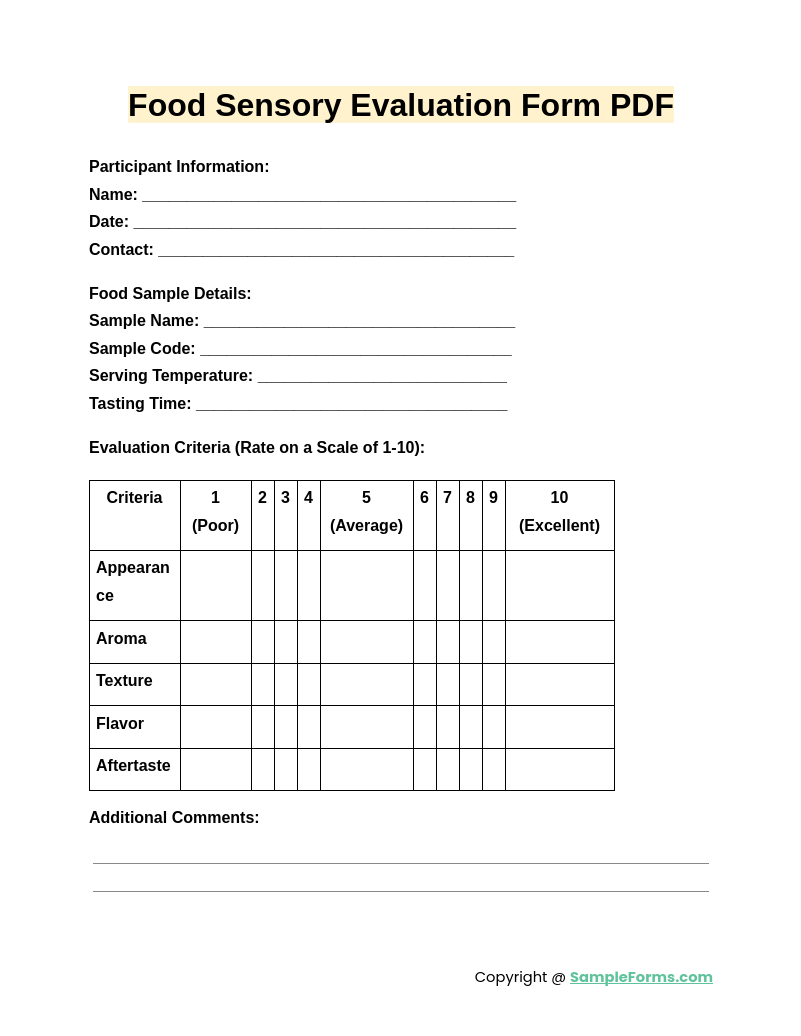
A Food Sensory Evaluation Form PDF simplifies the process of collecting feedback on food attributes like taste, aroma, and texture. Useful for research, it includes organized sections for Training Evaluation Form, ensuring accurate analysis and reporting.
Hedonic Scale Sensory Evaluation Form
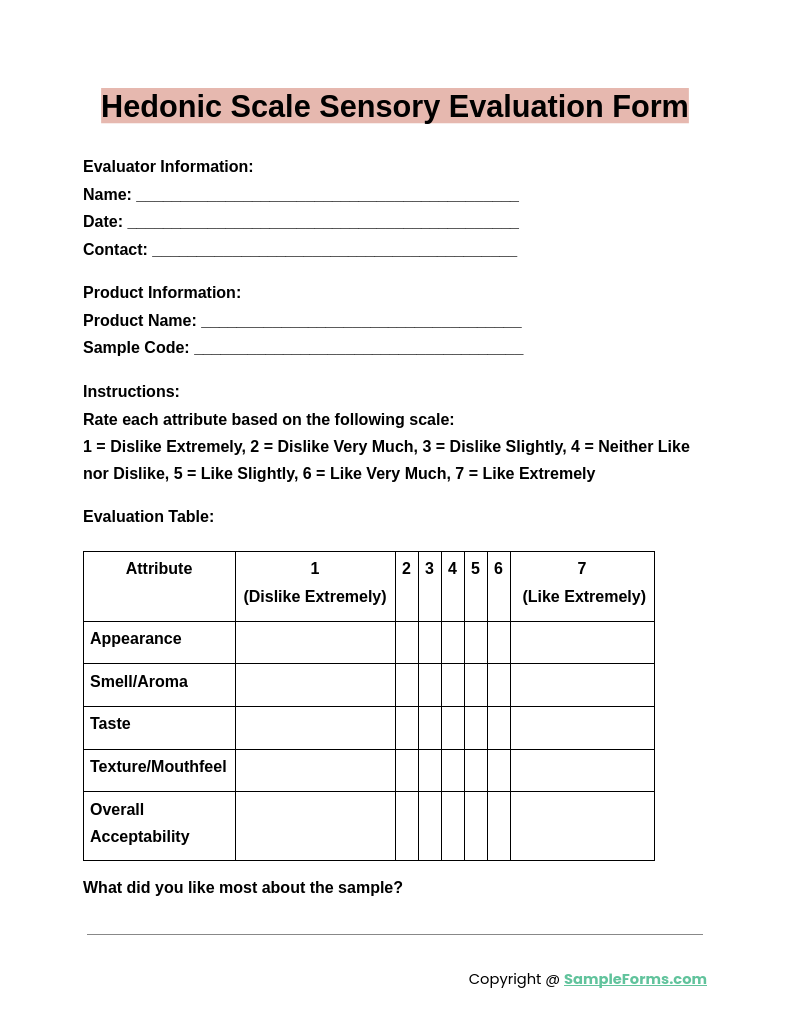
The Hedonic Scale Sensory Evaluation Form helps measure consumer preferences using a rating scale. Ideal for product testing, it includes structured fields for assessments while integrating Employee Self Evaluation Form to enhance collaborative feedback collection.
Sensory Evaluation Form for Cookies
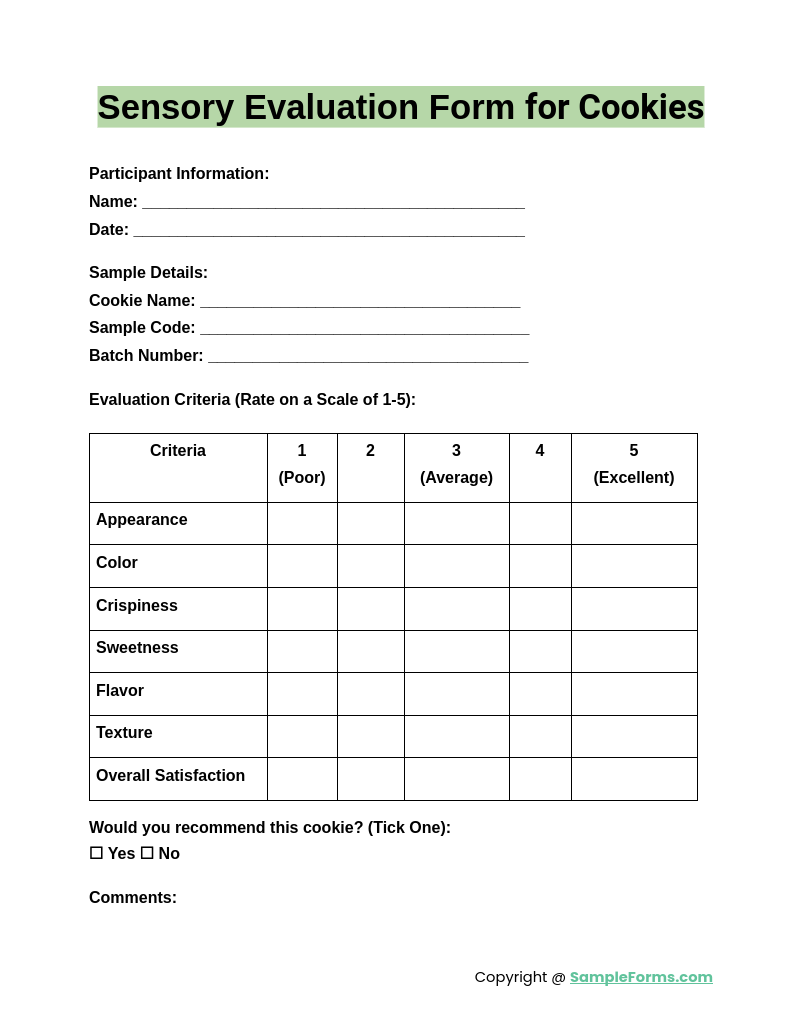
The Sensory Evaluation Form for Cookies evaluates factors like flavor, appearance, and texture. This form enables precise analysis and ensures consistent quality by embedding relevant insights, such as Peer Evaluation Form, for cross-referenced input.
Sensory Evaluation Score Sheet
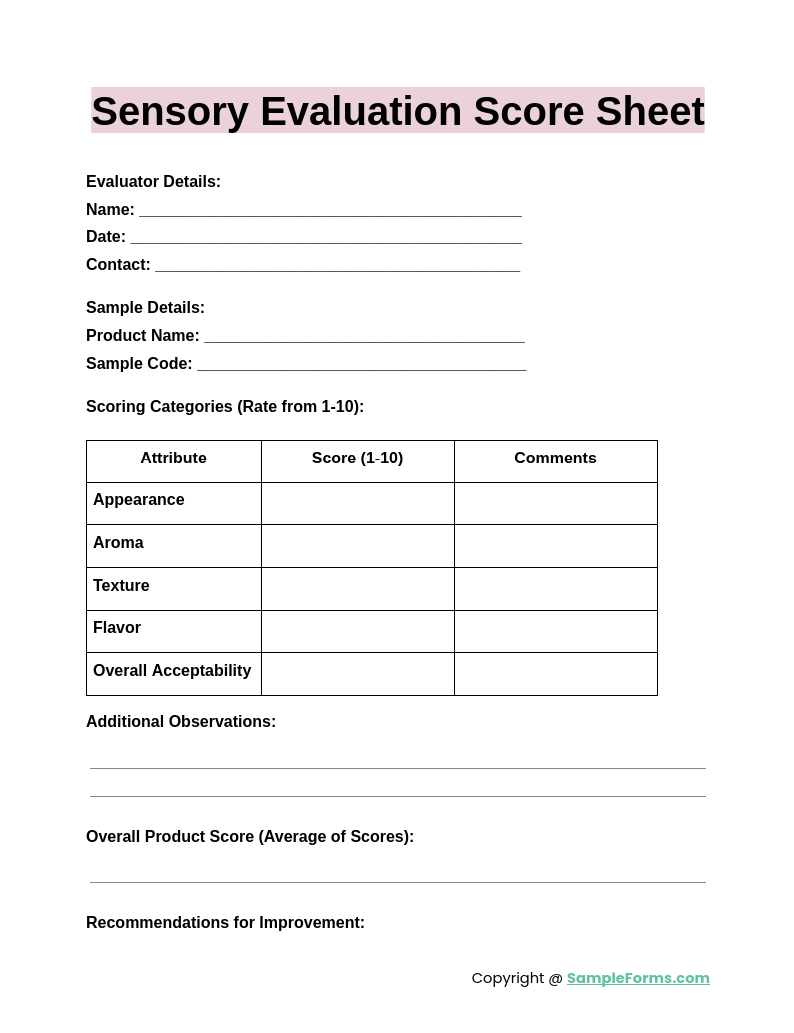
A Sensory Evaluation Score Sheet organizes sensory feedback into quantifiable metrics, ensuring easy comparison and reliable results. Complementing tools like Call Monitoring Evaluation Form improve data collection, streamlining the overall evaluation process for sensory assessments.
Browse More Sensory Evaluation Form
Food Sensory Evaluation Form
Beef Sensory Evaluation Form
Sensory Evaluation Form Example
Sensory Panel Check List
Sensory Test Evaluation Form
Sensory Processing Disorder Checklist Form
Sample Sensory Evaluation Form
Wine Sensory Evaluation Form
Sensory Test Method in Doc
What are the basic requirements for effective sensory evaluation?
Effective sensory evaluation ensures reliable results in product testing by meeting essential requirements. Key elements include objectivity, controlled conditions, panelist training, and clear methodologies.
- Objectivity in Evaluation: Avoid bias by using blind testing and standardized protocols to ensure unbiased and accurate results.
- Controlled Conditions: Conduct evaluations in well-lit, quiet environments with consistent temperature and ventilation to enhance focus and accuracy.
- Panelist Training: Train panelists to identify, describe, and rate sensory attributes consistently, ensuring high-quality evaluations.
- Standardized Procedures: Use predefined formats, such as a Speech Evaluation Form, to maintain consistency and repeatability across assessments.
- Data Analysis Methods: Implement reliable statistical techniques to analyze feedback and identify meaningful patterns in sensory preferences.
How to make sensory evaluation?
Designing an effective sensory evaluation involves preparation, tools, and analysis for accurate product testing and feedback collection. It ensures a structured approach.
- Define Objectives: Clearly outline the purpose, such as evaluating taste or texture, using structured formats like a Supplier Evaluation Form.
- Prepare Samples: Standardize samples for size, temperature, and presentation to avoid discrepancies during evaluation.
- Recruit Panelists: Select trained or untrained participants based on the evaluation’s complexity and goals.
- Develop Evaluation Tools: Use forms, scales, or score sheets tailored to specific sensory attributes.
- Analyze Results: Consolidate feedback and apply statistical analysis to derive actionable insights for product improvement.
What is the purpose of a sensory evaluation?
Sensory evaluation identifies consumer preferences and product quality by assessing sensory attributes like taste, aroma, texture, and appearance systematically.
- Quality Assurance: Evaluate products against industry standards to maintain consistent quality.
- Product Development: Gather insights to innovate or improve existing products using tools like a Contractor Evaluation Form for structured feedback.
- Consumer Preferences: Understand customer likes and dislikes for market-targeted strategies.
- Comparative Analysis: Compare competing products to identify strengths and weaknesses.
- Data-Driven Decisions: Use feedback to refine recipes, processes, or packaging to meet market demands.
What is included in a sensory assessment?
A sensory assessment includes tools, criteria, and environments for evaluating product attributes. It ensures comprehensive data collection for informed decision-making.
- Sensory Attributes: Assess appearance, aroma, taste, texture, and aftertaste to capture detailed feedback.
- Evaluation Tools: Use forms like a Nurse Evaluation Form for structured and reliable assessments.
- Test Types: Perform discriminative, descriptive, or hedonic tests based on the evaluation goals.
- Panelist Selection: Include experienced and unbiased individuals for accurate sensory analysis.
- Data Documentation: Maintain detailed records to enable future comparisons and trend analysis.
How do you perform a sensory assessment?
Performing a sensory assessment requires preparation, execution, and analysis for accurate and reliable results. Follow these structured steps:
- Planning: Define goals, attributes to assess, and evaluation methods, referencing formats like a Debate Evaluation Form for organization.
- Preparation: Arrange testing facilities, prepare standardized samples, and ensure controlled conditions.
- Execution: Conduct blind tests to eliminate bias and collect responses using tailored forms.
- Data Collection: Record panelists’ feedback systematically, categorizing it by sensory attribute.
- Analysis and Reporting: Consolidate feedback, analyze data statistically, and share insights with stakeholders for decision-making.
What is an example of a sensory evaluation?
An example is a taste test for chocolate, evaluating sweetness, bitterness, and texture using a Driver Evaluation Form style structured approach. It ensures unbiased sensory feedback.
How do you perform a sensory exam?
Perform a sensory exam by preparing samples, selecting panelists, and evaluating attributes like taste and aroma, similar to a Sales Evaluation Form approach for systematic analysis.
Are sensory issues linked to autism?
Yes, sensory issues like hypersensitivity to stimuli are commonly linked to autism, impacting daily routines. A Candidate Evaluation Form approach can help assess sensory challenges effectively.
What is the triangle test in sensory evaluation?
The triangle test involves presenting three samples, two identical and one different, to identify the odd one out. It ensures objective feedback, akin to a Customer Service Evaluation Form.
What is sensory screening test?
A sensory screening test evaluates basic sensory perceptions like sight, smell, and taste using structured formats, similar to a Bid Evaluation Form for clarity and consistency.
How do you conduct a sensory evaluation?
Conduct sensory evaluations by defining goals, preparing samples, training panelists, and documenting feedback systematically, following methods like a Basketball Evaluation Form for organization.
What is sensory analysis used for?
Sensory analysis assesses product quality and consumer preferences, helping in product development. It uses structured feedback systems, like a Restaurant Employee Evaluation Form, for reliability.
What happens after a sensory assessment?
Post-sensory assessment, data is analyzed to draw actionable insights for product improvement, akin to a Financial Evaluation Form for structured feedback and decision-making.
What is the comfort 5-point scale?
The comfort 5-point scale rates sensory attributes from “very uncomfortable” to “very comfortable,” enabling precise feedback similar to a Resume Evaluation Form approach.
What is the best time for sensory evaluation?
Morning hours are optimal for sensory evaluation when panelists are alert and unbiased. Use a Proposal Evaluation Form style for clear documentation of results.
A School Evaluation Form helps assess sensory responses efficiently and systematically. With various formats like hedonic scales or checklists, it gathers accurate feedback on product quality. Samples and templates simplify form creation, saving time for businesses and researchers. These forms ensure reliable sensory testing across industries, aiding in quality control and product refinement. From food products to fragrances, this tool is invaluable for aligning offerings with consumer expectations. Incorporating sensory evaluations ensures customer satisfaction and competitive advantage. This guide empowers you to maximize the potential of your sensory evaluation processes effectively.
Related Posts
-
Chef Evaluation Form
-
FREE 6+ Business Credit Checklist Forms in PDF
-
Employee Pay Increase Form
-
FREE 8+ Kitchen Evaluation Forms in PDF | MS Word
-
Customer Service Evaluation Form
-
FREE 15+ Grant Evaluation Forms in PDF | MS Word
-
FREE 14+ Volunteer Evaluation Forms in PDF
-
Mentee Evaluation Form
-
Speaker Evaluation Form
-
FREE 14+ Vehicle Evaluation Forms in PDF
-
FREE 14+ Trainee Evaluation Forms in MS Word | PDF
-
Resume Evaluation Form
-
FREE 14+ Retreat Evaluation Forms in PDF
-
Debate Evaluation Form
-
FREE 14+ Book Evaluation Forms in PDF | MS Word
